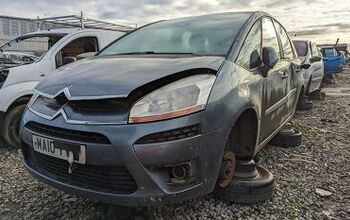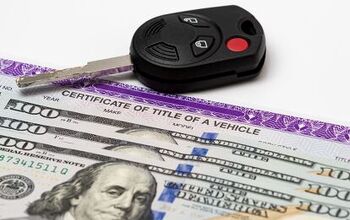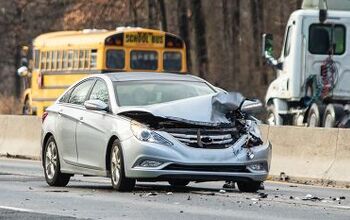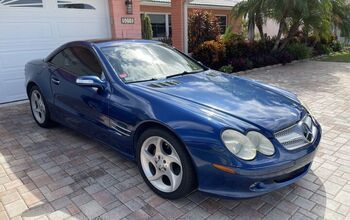US House Committee Blasts National Toll Road Bank Proposal
A top congressional leader on Wednesday made clear his opposition to President Obama’s idea of spending $10 billion to create a national infrastructure bank ( view details). The bank, part of the White House jobs bill, would offer public subsidy for the financing of “public private partnerships” — which most often would take the form of a toll road. The chairman of the US House Transportation Committee said at a hearing the president’s plan would not advance.
“A national infrastructure bank is dead on arrival in the House of Representatives,” Chairman John Mica (R-Florida) said. “If you want a recipe to put off job creation, adopt that national infrastructure bank proposal.”
Opponents called the proposal a “distraction” from the issue of a long-term highway program reauthorization bill which would include funding for state-level toll road banks. Already, thirty-two states have their own infrastructure banks which have financed $6.3 billion in loan agreements along the same lines as the proposed federal bank.
“Many people are skeptical that bureaucrats in Washington would have any idea which transportation projects are most deserving of receiving a federal loan,” Highways and Transit subcommittee Chairman John J. Duncan, Jr (R-Tennessee) said. “This skepticism is why Congress has already established the state infrastructure bank program in SAFETEA-LU.”
In addition, the US Department of Transportation already provides federal credit for transportation projects under the Transportation Infrastructure Finance and Innovation Act (TIFIA), which has offered $8.4 billion in project finance. Dozens of other financing mechanisms are offered by the Federal Highway Administration.
“Why build one when you could build two for twice the price?” Representative Howard Coble (R-North Carolina) said sarcastically.
Democrats offered the only backing for the bank idea.
“Before Wall Street destroyed the economy, I had said, ‘Well, I really don’t see the need for an infrastructure bank — most of the states have good credit and they can go out and borrow on their own at very good rates,” said subcommittee Ranking Member Peter DeFazio (D-Oregon). “But that isn’t the case any more. The states need guarantees, they need help, many are against their borrowing limits, and most of the banks generously bailed out by Congress — not by me, I didn’t vote for it — aren’t lending. Credit and bond markets are tight.”
DeFazio only supports the use of the bank only for water, sewer and energy projects. He does not support tolls on existing interstates.
[Courtesy: Thenewspaper.com]
More by The Newspaper
Latest Car Reviews
Read moreLatest Product Reviews
Read moreRecent Comments
- Bd2 There's nothing wrong with admitting there is a problem yet that is but the first step. Hopefully GM can resurrect their vaunted hybrid technology and apply it to high value luxury vehicles and perhaps give the world a revival of that V Magic. They could even give Genesis a run for it's crosshatched grille money.
- TMA1 Tell me the ICE version is going to weigh less. A 5,800 lb electric Charger just took the worst part of the old Charger and made it 30% heavier.
- Danddd Just say no to CVTs unless you like the sound of droning.
- Oberkanone GM will have 30 EV models by 2025. Over 40% of GM sales will be EV by 2025.quote - Marry Barra circa 2020Including 4 Chevy EV, 2 Buick EV, and 4 Cadillac EV.
- Dwford There's plenty of time between now and 2030-35 to design and sell through a whole new generation of ICE vehicles, if not 2 generations. Chevy seems to be on a dual track plan with ICE and EV versions of the Equinox and Blazer nameplates. No reason Cadillac can't do something similar.


































Comments
Join the conversation
Leaving politics out of it, I DO see some need for SOME tolls on SOME projects where it's really the best solution to raising money for replacing a major arterial, such as the aging 520 floating bridge here in Seattle, but not ALL projects need a toll. Personally, states that rely on what amounts to a permanent toll system just nickles and dimes people, just so they can get somewhere, um, no thank you. Puget Sound has 3 areas of tolls, but you aren't REQUIRED to use them, the 520 bridge once they get the kinks worked out on the tolling system (no toll booths) and have it working on the HOT lanes where if you want to use it and are a single driver, you MUST pay a variable toll depending on the time of the day using a transponder mounted on your windshield and again that same transponder works with the new Tacoma Narrows Bridge when you are heading back across it into Tacoma (Eastbound). It's all done by the Good to Go pass that works at all three. But if you must use the 520 bridge or coming across the new section of the Tacoma Narrows Bridge (the old bridge remains toll free), then yes, you gotta pay the toll but we don't have tolls everywhere thankfully. I can't remember now if a toll will be used on the new tunnel replacement for the Viaduct that's on schedule to be torn down eventually. All that said, the DOT should be scaled way back and be simply an oversight for all states to ensure consistency of rules, etc so that when one drives from say, Tacoma to Boston across country, that the rules of the road and other more common expectations remain consistent and nothing more and they would not have the authority to implement things like this toll bank but will work with raising the gas tax, which I'm all in favor of raising for today's cars are MUCH more fuel efficient than they used to be and the current rate hasn't kept pace with construction costs to repair/replace aging highway infrastructure. All that said, money needs to be made to do these now necessary projects and keep them maintained so I'd like to see a more proactive stance on how to go about this without automatically resorting to a toll, just because it can be done and nickle and dime the poor motorist who has to struggle to stay afloat themselves on the basics like rent/mortgage, food etc. As for the highway project? I'm glad it was done, as it makes parts of the trip quicker than most of the older, admittedly more interesting 2 or 4 lane highways that predated the modern highway system but are often more dangerous if one's not careful so I see it as a boon, not a hindrance. But the highways today are now 40 years old or much older and it's time they get the attention they so deserve to remain a viable way to travel.